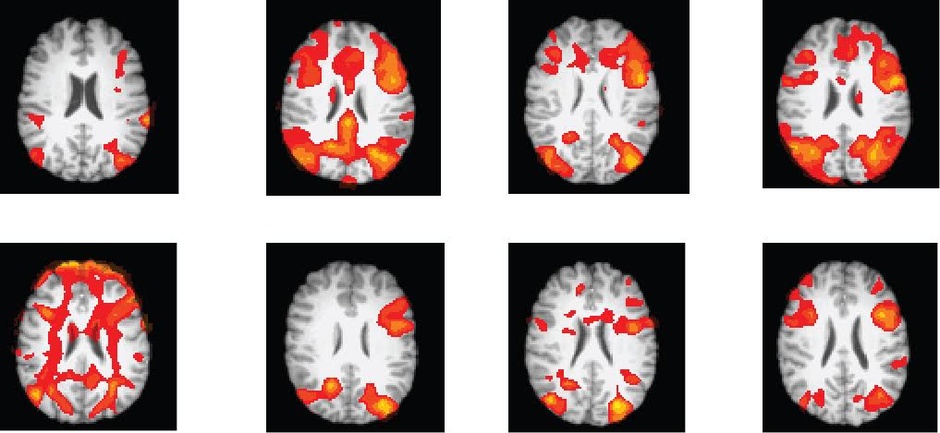
Smart citizens of the future must develop the skillsets required to understand spatio-temporal interactions in dynamically linked urban networks of places according to Geothink Co-Applicant Stéphane Roche (Photo courtesy of http://www.i2cat.net/sites/default/files/smart-city.jpg).
By Drew Bush
In a paper published this past May, Geothink Co-Applicant Stéphane Roche posits that emerging smart cities require citizens to develop an urban intelligence that meshes material realities with digital information. In order to fully manage and engage with urban spaces, future smart citizens must develop the skillset required to understand spatio-temporal interactions in dynamically linked urban networks of places.

Stéphane Roche is a professor and vice dean of research for the Faculty of Forestry, Geography, and Geomatics at the University of Laval (Photo courtesy of www.scg.ulaval.ca).
Entitled Geographic information science III: Spatial thinking, interfaces and algorithmic urban places-Toward smart cities, the paper was published in Progress in Human Geography. Roche, a professor and vice dean of research for the Faculty of Forestry, Geography, and Geomatics at the University of Laval, has previously written two papers on the subject. The series of papers defines urban intelligence, the importance of spatial reasoning in smart cities, and the organization of digitally enabled cities.
“Most of the resources that are today available in order to help people to move in the city, are available—are digitally available,” Roche said. “[Yet] at the same time, mobility in the city is really grounded in the materiality. If you need to walk or if you need to take your bike, it’s an active kind of mobility. And if you don’t really know perfectly the places where you need to travel, you need to have the minimum capability to access information from different kinds of interfaces. Through your phone, through the Internet, through a different kind of display available in the city for example.”
Transportation presents but one case study for examining the integration of digital technology into physical urban places. Roche expands on this interaction to further define place as consisting of three elements: 1) A geographical location; 2) An event (such as an accident, festival, or meeting); and 3) A name. This, of course, means that two separate places could involve the same physical space but at different times.
As you may imagine, this type of insight takes time to develop. After reflecting on the existing literature in the field, along with his own previous work, Roche begins his first paper, Geographic Information Science I: Why does a smart city need to be spatially enabled? by emphasizing the importance of Geographic Information Science (GIS) to smart cities. He argues that the smart city is first and foremost a spatially enabled city.
His second paper, Geographic information science II: Less space, more places in smart cities, Roche advances the idea that modern cities consist of networks of connecting places, amends the very definition of place, and posits urban intelligence as the capability to understand how urban places are created and how they interact. Finally, his most recent third paper comes full circle to question why people who have developed urban intelligence necessarily also employ spatial learning and reasoning skills.
“Actually, what I’ve tried to do in this report is probably link what I define as the urban intelligence,” he said. “That means the capability of someone, people, or a group to understand the urban dynamic by using spatial skills and spatial thinking abilities. That means making the link between different components of the urban environment. So this is what I define as the urban intelligence. The capability of understanding what’s happened at the specific time and specific place.”
“The aim, ok, is to say in our current modern environment, there are multiple opportunities and tools and approaches that could help humans to improve their spatial thinking ability,” he added. “And these improvements will be more and more required if people want to engage. That means they will, there is no way to keep them engaged without spatial thinking abilities in this kind of new urban environment where everything is connected. Where everything is based on dynamic fluxes and mobilities. So if you are not able to understand how those dynamics work, you will have more and more difficulty in getting grounded in the place where you live.”
Please find links and abstracts to each paper mentioned in this article below:
Abstract 1
Geographic Information Science I: Why does a smart city need to be spatially enabled?
In this report I propose to examine the concept of the ‘smart city’ from the standpoint of spatial enablement. I analyse emerging research on smart cities, particularly those addressing the potential role of GISciences in the development and implementation of the concept of smart cities. I develop the idea that the intelligence of a city should be measured by its ability to produce favourable conditions to get urban operators (citizens, organizations, private companies, etc.) actively involved into sociospatial innovation dynamics. To obtain such a commitment, I believe that operators should be able to develop and mobilize (digital) spatial skills so that they could efficiently manage their spatiality. In other words, I argue that a smart city is first of all a spatially enabled city.
Abstract 2
Geographic information science II: Less space, more places in smart cities
This second report is dedicated to the concept of ‘place’ revisited in the context of smart cities. Some recent studies suggest that today’s digital cities rely more on an approach to the urban context based on a network of connected places than on an approach to the city built on areal spaces. Does it mean that there are more places and fewer spaces in spatially enabled cities? Is the intelligence of a city mainly related to its ability to sound out the genesis of urban places? These issues raise questions about the design of spatial models used to build GIS, as well as place-based urban design methods and tools. This second report explores these questions from the standpoint of GISciences.
Abstract 3
Geographic information science III: Spatial thinking, interfaces and algorithmic urban places—Toward smart cities
This third report examines interfaces as a key element enabling spatial skills, and development of new forms of digital spatialities for smart cities. Digital technology is becoming consubstantial to urban materiality, but map interfaces are particularly central tools for indexing (geographic) knowledge and expertise, accessing informational components of digital cities, and actively engaging digital dimensions of urban places.
If you have thoughts or questions about the article, get in touch with Drew Bush, Geothink’s digital journalist, at drew.bush@mail.mcgill.ca.
